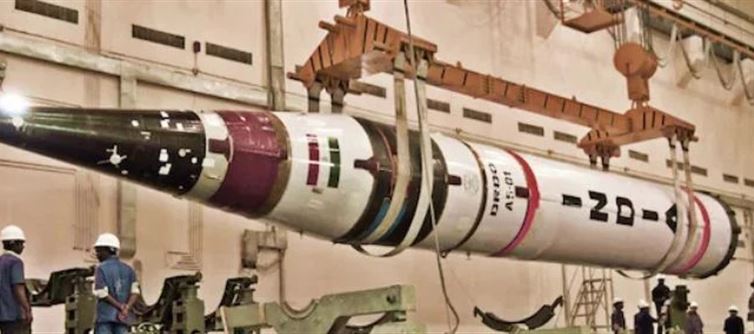
The next-generation bunker buster, an extremely deadly Intercontinental Ballistic Missile (ICBM), is currently being developed by India. Because of its extraordinary capabilities, this missile is described as being exceedingly lethal. Before detonating, this missile can travel 80–100 meters underground. This bunker buster of the future will undoubtedly be quite deadly.
What makes Agni-5 the most dangerous Bunker Buster ever built?
The Defense Research and Development Organization (DRDO) is working on this missile. This missile, known as the Agni-5 Bunker Buster, has a payload capacity of roughly 7,500 to 8,000 kilograms and can carry both conventional and nuclear bombs. The amount of destruction it can cause can be inferred just from its payload capacity.
What are the key features of Agni-5 Bunker Buster?
The Agni-5 missile's primary characteristics are its hypersonic velocity, which varies from Mach 8 to Mach 20, and its about 2,500-kilometer strike range. Agni-5 outperforms some of the most advanced bunker buster weapons on the market, such as Russia's KAB-1500L-Pr and the United States' GBU-57 Massive Ordnance Penetrator (MOP), thanks to its depth of capability.
According to a number of reports, Agni-5 is the most deadly deep-penetration weapon available, making it nearly impossible for enemies to defend against. According to the indian Defence Research Wing (IDRW), the new variant of the Agni-5 Bunker Buster sacrifices range for payload, carrying a 7,500–8,000 kg warhead intended to pierce 80–100 meters of rock or reinforced concrete before detonating.
How does Agni-5 outperform the US GBU-57, Russia's KAB-1500, and China's DF-15C?
According to media sources, india is working on a number of Agni-5 missile variants. Earlier this year, some of these variations started the development process. One of these variations is probably going to have a strike range of around 5,000 kilometers, based on the reports.
The payload has been optimized in the latest Agni-5 models. Although it can still carry a 7,500–8,000 kg warhead, the missile is designed to deep-strike by penetrating solid rock up to 80–100 meters before detonating.
Agni-5's mobility is another important feature; it can be launched from a mobile launcher, also known as a mobile trunk, allowing for deployment from a variety of terrains and locations. China's missile silos on the Himalayan border or Pakistan's nuclear storage facility in Kirana Hills can both be totally destroyed by the deep-penetration warhead form of the Agni-5.
It can theoretically neutralize enemy nuclear assets without going over the nuclear threshold because to its ability to burrow 80–100 meters below before detonating, making it a vital tool for counterforce operations or preemptive strikes. To further increase the missile's adaptability, a second version with an airburst warhead is being created for surface targets such as radar posts and airfields, according to the IDRW paper.
Why is pakistan Afraid?
Defense analyst Rabia Akhtar urged the world community to step in and stop the construction of India's Agni-5, calling it a serious threat to pakistan in an article published in Dawn. The missile represents a major threat to deep subterranean command and control centers, nuclear facilities, and surface-based targets, she said, calling it a disturbing and startling development. The missile could excavate between 80 and 100 meters underground with its 7,500 kg payload.
Professor Rabia Akhtar of Lahore university described this missile as a risky change in India's military approach. She was worried that the Agni-5 might overlap with nuclear and conventional warfare, which raises the possibility of regional instability and miscalculations.
According to her, if india launches a missile like that towards Pakistan's nuclear command centers or secret bunkers, pakistan might perceive it as a nuclear threat. In that case, even a conventional missile attack could escalate into a nuclear conflict, as the strike could set off a highly dangerous chain of events.




 click and follow Indiaherald WhatsApp channel
click and follow Indiaherald WhatsApp channel